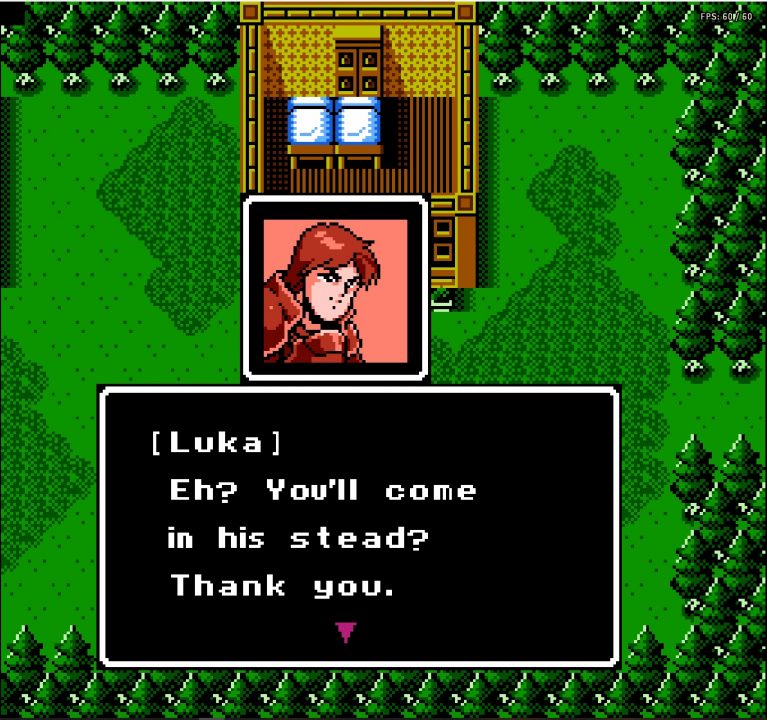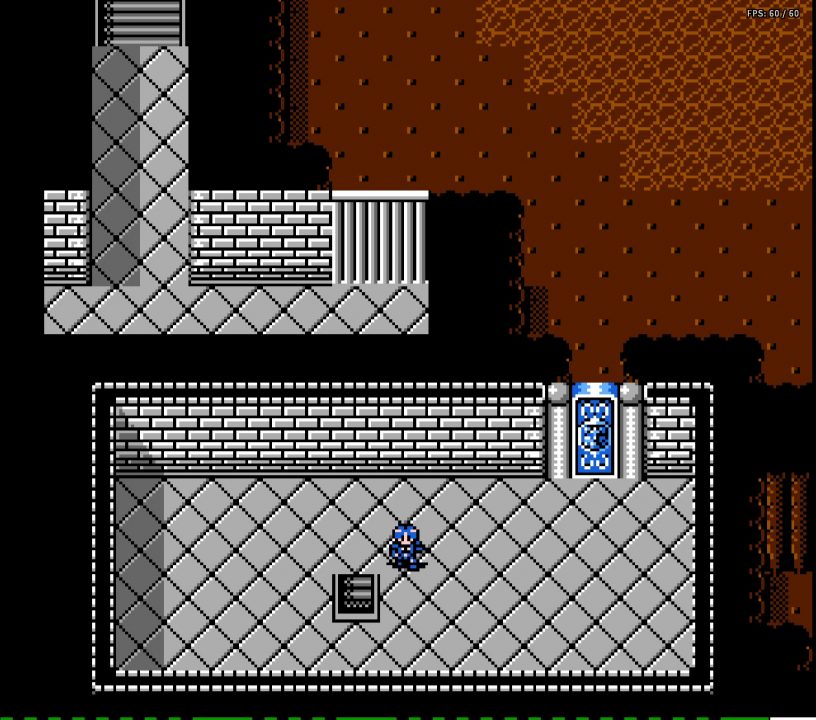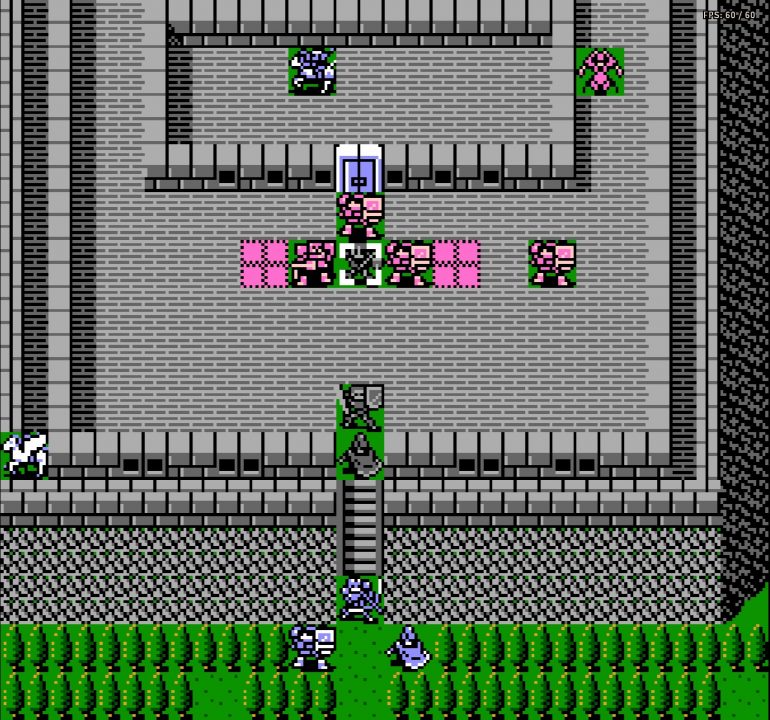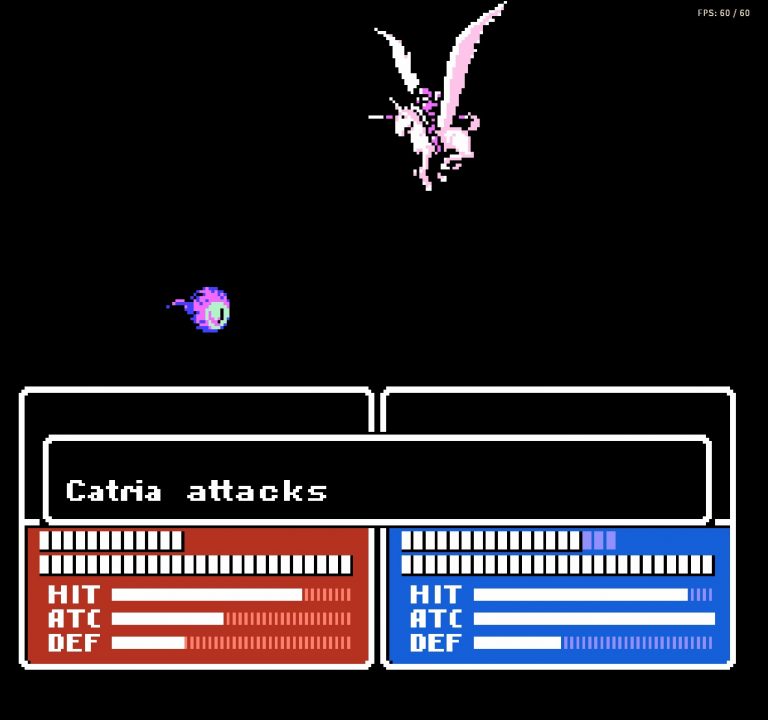Fire Emblem Gaiden never saw release in the west save for a 3DS remake. Despite this, I’ve seen the title discussed ad nauseam in Fire Emblem communities, and even odder still, people rarely seemed to like it. Now that I’ve played it (using Artemis251’s fan translation), I finally get what’s so captivating about this bizarre entry in the Fire Emblem series.
While Fire Emblem Shadow Dragon & the Blade of Light felt like an early blueprint for the modern Fire Emblem game, Fire Emblem Gaiden feels more like an experiment. Gone are series mainstays like promotion items, villages, and breakable weapons. In their place is a smattering of new ideas like dungeons, route splits, and map battles.
Fire Emblem Gaiden feels unusual the moment you boot up the game. Instead of starting out controlling units on a grid, you control a young man named Alm in real-time in his small village. You can walk around and talk to NPCs or leave the village and enter the world map — all standard stuff for RPGs in general, but very out of the ordinary for a Fire Emblem game. Before long, Alm is invited to join a rebellion against the evil general Desaix.
Once Alm joins the rebellion, Fire Emblem Gaiden starts to feel more like a Fire Emblem game. You travel from battle to battle on the world map, each using the grid-based combat system series veterans are familiar with. Unlike other Fire Emblem games, however, between each major battle are a few small-scale skirmishes, where a portion of your army does battle with a small group of enemies. These battles help sell the story of Alm being part of a ragtag militia. These map encounters also respawn, allowing players to grind if the major battles become too difficult.

Besides the strategic battles in Fire Emblem Gaiden, players must also contend with dungeons. While dungeons sound odd for a Fire Emblem game, they don’t play too differently from the battles on the world map. Most dungeons have a single encounter, and it’s the same one each time you play it. After finishing a dungeon you are treated to stat enhancing fountains and shrines that enable you to promote your characters to new classes. Unlike most Fire Emblem games, many characters in Fire Emblem Gaiden can promote twice. Instead of stopping at Paladin, Cavaliers can promote all the way up to the powerful Gold Knight class, for example.
Repeatable battles and the extended promotion system encourage the player to spend some time grinding. In my playthrough, I didn’t do much grinding and only had one character ready to promote to their third class by endgame. This is unfortunate, as the difficulty feels about right with no grinding, but it’s disappointing not to fully promote most of your units while enemies are sporting all those fancy Tier 3 classes.
Regardless of whether a fight kicks off in a dungeon, on the map, or in a castle, maps in Fire Emblem Gaiden are simplified even compared to Fire Emblem: Shadow Dragon & the Blade of Light. Many encounters are just several copies of one or two enemy types on a featureless map. Major encounters include terrain to make things interesting, but chests, recruitable characters, and villages don’t make an appearance during combat. And the only objective for most maps is to defeat all the enemies. Even the classic Fire Emblem “seize throne” objective is gone. This makes many maps a slog as you spend several turns at the end just mopping up the one or two enemies that ran away from the fight when their health got low.

One of the most interesting elements of Fire Emblem Gaiden’s gameplay is the inventory system. Unlike most Fire Emblem games, where you have five to ten item slots per character and weapons are plentiful, each Fire Emblem Gaiden character gets one equipment slot, and weapons are hard to come by. Each weapon in Fire Emblem Gaiden is indestructible, but you often only get one, and you may not get enough weapons of one type for all the units you’d like to equip. For example, I used a lot of lance users, but I only had three good lances to go around. The rest were stuck using the weak default weapons.
The item system is great because it forces you to make more strategic decisions with your items than you do in most Fire Emblem games. Instead of spending a bunch of gold in the end game to equip all my units with powerful weapons, I had to decide which unit was going to perform best with the one powerful weapon I had. On subsequent playthroughs, you may even tailor your unit and class selection based on what items you know will be available. The limited nature of the weapons in Fire Emblem Gaiden makes each one feel special, and it takes careful strategy to get the most out of them. Unfortunately, the lack of chests and villages is a missed opportunity that would have enhanced the item system. If items were obtained through optional map objectives that could be lost, it would add one more thing for players to think about on some of the game’s simple maps.

The item system is supported by what might be Fire Emblem Gaiden’s most lasting legacy, the route split. In Fire Emblem Gaiden, players control two armies: a rebel army led by Alm, and a group of priests, mages, and mercenaries led by Celica. The routes occur simultaneously, and the stories are intertwined. The maps, armies, and items, however, are unique to each route.
The route split is my favorite part of Fire Emblem Gaiden. Both armies are full of charming characters, and their different soldiers and items force you to change up your playstyle. During Alm’s maps, you can make use of your powerful physical units to stop up chokepoints and cut through enemy armies. In contrast, Celica’s army is full of magic users and hard-hitting Pegasus Knights, who trade survivability for mobility and utility.
Fire Emblem Gaiden’s two routes add flexibility to the gameplay by allowing you to switch between the armies at any time. If you hit a frustrating map or start to get bored, you can jump over to the other route to freshen things up. Additionally, you occasionally get the opportunity to trade items between Celica and Alm’s armies. You have to carefully consider which items are most important and who can use them best, because if you trade an item over you may not be able to get it back for several maps.

The biggest issue with the route split is the quality of the maps on Celica’s route. During the first portion of the route, it feels like almost every map is set on boats. These maps tend to be small and have minimal terrain. You’ll spend an hour or two playing through maps that look and play very similarly to each other, and things get worse before they get better. Once you’re through with the boats, you’ll be dealing with map after map of difficult terrain that slows your foot soldiers down to a crawl. Desert maps have always been controversial in Fire Emblem games; I usually like the change of pace they offer, but typically there are only one or two per game. Fire Emblem Gaiden has closer to double-digits worth of desert/swamp maps. You get a few powerful flying units that dominate these maps, but it feels bad that most of your units are so heavily limited.
Beyond the gameplay, Fire Emblem Gaiden tells a simple story about war, religion, and extremism as Alm and Celica seek to end the conflict between the religious nations of Zofia and Rigel. Though the game has many characters, the focus is on Alm and Celica, and it does a good job of making the player want the two and their armies to be united. Overall, the story is nice for a Famicom game, but it is still barebones, as one might expect.
Surprisingly, I thought the game’s visual presentation was nice. Considering the limitations of the hardware, I was impressed with how expressive and distinct most of the units look. In combat, the pixel art is serviceable. It’s easy to see what’s going on in each battle at a glance, and the unique animations for each class are fun to watch.
All in all, Fire Emblem Gaiden is a fascinating mixed bag. It’s loaded with forward-thinking elements that would become series staples like the route split and fun additions like the inventory system, but it’s held back by awful maps, dungeons, and the removal of features like chests and villages. Despite the baggage, Fire Emblem Gaiden is a very memorable experience, but one that’s difficult to recommend to someone who isn’t willing to deal with the more experimental mechanics it brings to the table.


